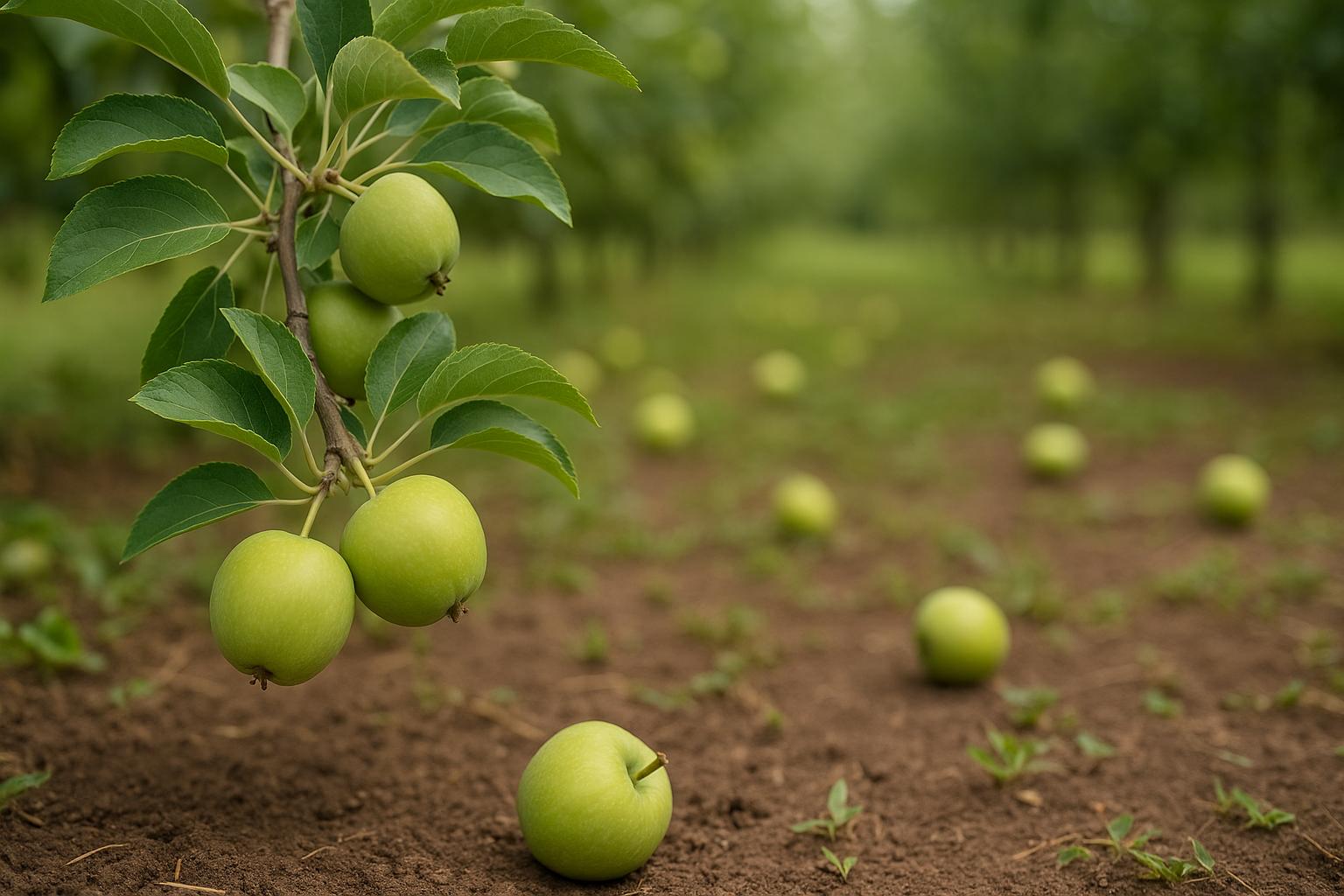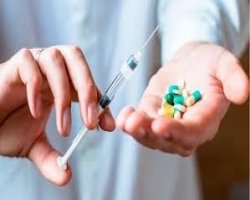Is Fruit Drop Preventable with the Right Input?

Fruit drop can be one of the most frustrating challenges for farmers and orchard managers. Just when a crop begins to look promising, fruits start falling prematurely—sometimes by the handful, sometimes by the hundreds. This phenomenon not only impacts yield but also damages fruit quality, consistency, and overall profitability. While environmental stress is often blamed, the truth is that fruit drop can be significantly reduced with the right input, applied at the right stage, and in the right way.
This blog examines how a precise approach, rooted in plant physiology and informed by reliable data, can shift the balance from fruit loss to fruit retention.
What Exactly Causes Fruit Drop?
It’s More Than Just a Weather Problem
Yes, high temperatures and erratic rainfall contribute to fruit drop. But the core causes often originate within the plant's physiology. Most fruit trees and crops undergo a natural shedding phase after flowering. This is normal. The real problem begins when the plant starts dropping too many fruits, more than its ability to support, often triggered by:
Hormonal imbalance, especially low auxin levels
Poor pollination or fertilization
Nutrient deficiency, particularly boron and calcium
Water stress or extreme humidity shifts
These triggers lead to an increase in ethylene production—a plant hormone that accelerates aging and drop. When unchecked, this process snowballs into significant crop loss.
Is It Really Possible to Prevent It?
With the Right Input, Yes
Fruit drop can be minimized by correcting hormonal signals at the right time. This is where synthetic auxins come into play. One of the most proven tools in this category is alpha-naphthyl acetic acid (NAA), which mimics natural plant hormones and supports fruit retention by:
Suppressing ethylene-induced abscission
Promoting cell division in developing fruit
Strengthening pedicel attachment to the stem
The most reliable formulations are water-soluble and tailored for field use. One of the most effective among them is Shop Alpha Naphthyl Acetic Acid 4.5% SL, a foliar spray designed to intervene precisely during the pre-drop stage. It works across a wide range of fruit crops, including guava, citrus, apple, mango, and pomegranate.
When applied correctly, farmers report a reduction of up to 60% in premature drop, especially during the early fruiting stages.
Use during 60–80% flowering for best retention.
Repeat if needed during initial fruit formation under high-stress conditions.
How Do Hormones Like NAA Help?
Balancing Auxins and Ethylene
Auxins are plant growth hormones that play a crucial role in fruit development. They help with:
Cell elongation
Fruit setting
Nutrient flow from leaves to fruits
Ethylene takes over when auxin levels decline, initiating the process of natural separation. This hormonal balance is restored by supplementing with synthetic auxins, such as NAA, which enables fruits to maintain a firmer hold and reach full maturity over a more extended period.
Studies carried out by agricultural institutes in Southeast Asia and India revealed that crops treated with NAA in the early phases of fruiting not only displayed less drop but also:
Improved fruit size
Uniform ripening
Better shelf life
“Fruits don’t fall because they want to. They fall because the plant gives up trying to hold them. The right input can make it try harder.”
Which Crops Benefit the Most?
NAA’s Versatility Across Fruit-Bearing Plants
NAA-based inputs are not crop-specific. They are compatible with a broad range of commercial crops, including:
Citrus: Reduces post-blossom drop and increases final fruit count
Guava: Prevents heavy drop during pre-monsoon and early winter flowering
Pomegranate: Supports even fruit retention in polyhouse and open-field conditions
Mango: Enhances off-season retention and promotes better canopy balance
Tomato and brinjal: Prevents flower drop in high-temperature zones
Each of these crops shows a positive response when applied during critical stages of flowering and fruit initiation.
For crop-specific protocols, resources such as ICAR’s horticultural research recommendations provide seasonal guidelines.
How Do Application Practices Affect Results?
Timing, Dosage, and Weather Alignment
Application success depends on following a few essential principles:
Dilution: Use 40–60 ml per 15-liter knapsack sprayer, depending on plant size and crop sensitivity
Spray volume: Ensure complete coverage of leaves and developing fruits, especially undersides
Timing: Early morning or late afternoon is ideal to reduce evaporation and maximize absorption
Weather: Avoid application just before or after heavy rain, which can wash away the active ingredient
Many growers don't achieve results because the product isn't effective but rather because the application didn't occur at the correct time. Before a noticeable decline occurs, auxins must be applied.
Additionally, keep in mind that tank-mixing NAA with strong alkaline solutions or copper-based fungicides might destroy the hormone and lessen its effectiveness.
What Makes NAA Different from Other Inputs?
It’s a Regulator, Not a Fertilizer or Pesticide
NAA doesn’t supply nutrients or kill pests—it regulates internal plant processes. That makes it a strategic tool, not a general-use input. Its action is subtle yet impactful.
It does not cause rapid external changes
It doesn’t leave residues harmful to beneficial insects
It supports internal balance rather than external protection
It works well with Integrated Crop Management (ICM) programs and sustainable agricultural practices due to its focused mode of action. It assists farmers in maintaining visual homogeneity in high-value fruit exports without the need for additional chemicals.
In seasons prone to stress, the strategic application of plant growth regulators, such as NAA, can increase crop resilience and reduce harvest loss by as much as 20%, according to CABI.
FAQs
How many times should I apply NAA in a season?Generally, one or two applications during flowering and fruit initiation are enough. In extreme stress, a third round may be added.
Can NAA be used in organic farming?Synthetic NAA is not allowed in certified organic systems. However, natural auxin substitutes like seaweed extracts are used in some organic programs.
Will it affect taste or color of fruits?No, but by promoting longer on-plant development, it can enhance natural sweetness and pigmentation indirectly.
What if I spray NAA too late?Late sprays may not reverse drop that has already started. Always aim for early intervention.
Is it safe to mix NAA with insecticides?Avoid mixing unless you have confirmed compatibility. Prefer standalone application to preserve its hormonal action.
What’s the Future of Fruit Retention Inputs?
As climate stress increases and market demands shift toward uniform, shelf-stable produce, fruit retention tools will continue to grow in importance. The next generation of inputs may combine hormonal regulation with bio-stimulant properties, offering dual benefits of growth and resistance.
Precision farming, AI-powered crop monitoring, and sensor-based spraying will enable more precise and timely NAA applications. As these systems develop, early intervention will rely on predicted information from satellite imaging and field sensors rather than hunches.
The lesson for farmers is clear: Start thinking beyond pesticides and fertilisers if you want full-size fruits and better packhouse-grade yields. Examine the plant's inside. And inquire: did the plant give up, and are your fruits falling? Or because you failed to provide it with what it most needed?










